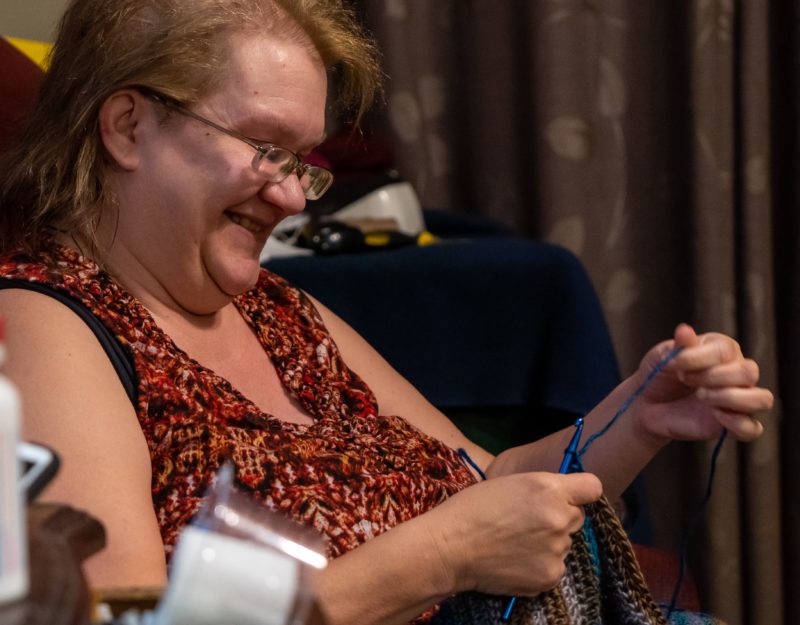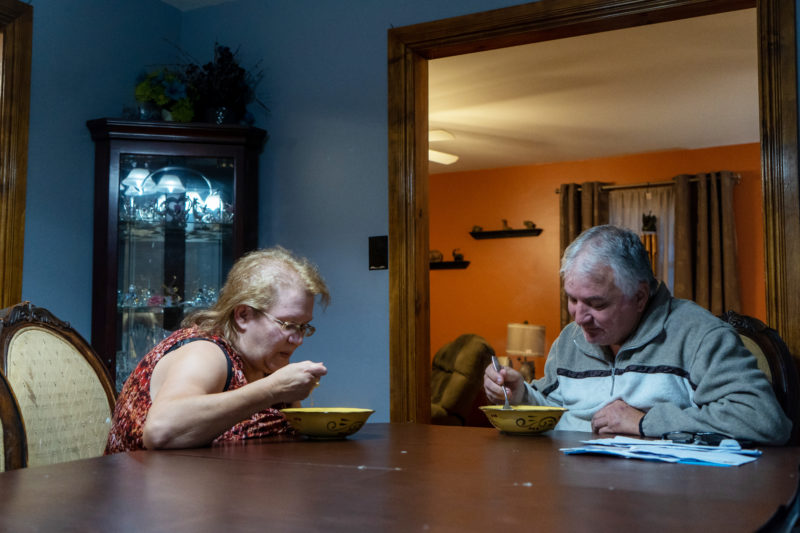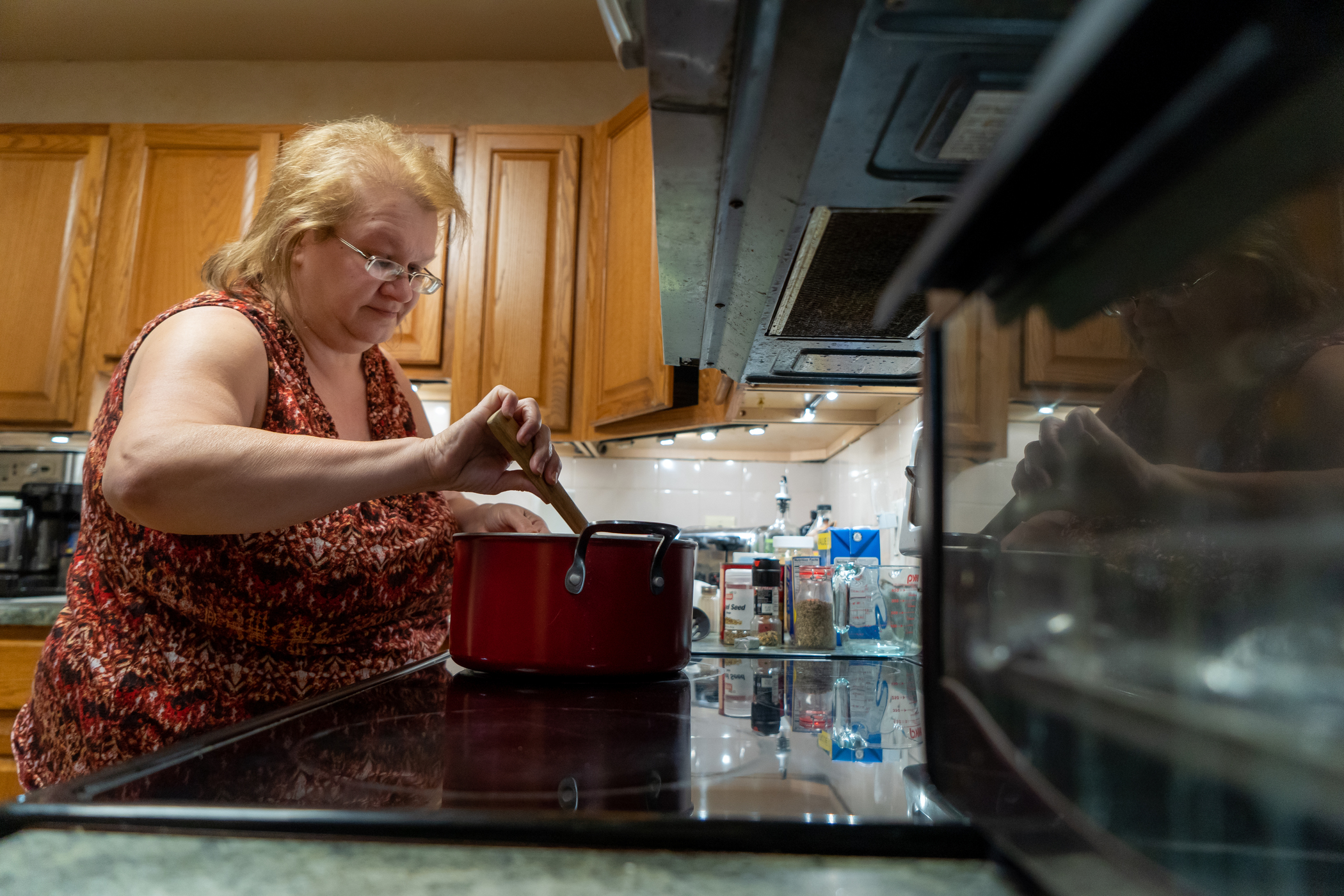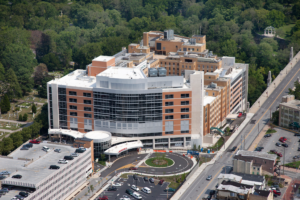For more than 30 of her 56 years, Robin Bricker has lived with pain that would not go away.
It started when she was still in her 20s and her knees began aching. Later, her joints and spine throbbed with arthritis. Sciatica sent shooting nerve pain from her back down her leg. Fibromyalgia made her muscles hurt and kept her from getting a good night’s sleep.
Bricker went to various health care providers over the years. She also tried acupuncture and over-the-counter supplements, including chondroitin, a substance that occurs naturally in the connective tissues.
But nothing provided long-term relief. As her pain grew, Bricker did fewer of the activities she once enjoyed.

“A couple of years ago, I was walking with a neighbor on a regular basis,” she said. “Then I got to the point where I have to use a motorized cart in the grocery store.”
Sometimes, she felt down. But she never gave up. In fall 2019, she turned to ChristianaCare’s Comprehensive Pain Center, which takes a holistic, multidisciplinary approach to managing chronic pain, defined as pain that lasts more than six months after an illness or injury.
The goal is to get to the root cause of the pain and treat it rather than mask symptoms with medications. The center’s caregivers use techniques to improve patient well-being and function without opioids.
“Pain isn’t just physical. It’s social, it’s physical, it’s emotional.”
Hersh Patel, M.D.
At the Comprehensive Pain Center, the team includes interventional pain physicians, behavioral health specialists, integrative medicine physicians, pain psychiatry and a chronic pain-focused nutritionist.
Services also include acupuncture, aqua therapy and osteopathic manipulation, which uses manual techniques to alleviate muscle pain. Interventional therapies include epidural steroid injections, joint injections, trigger-point injections, radiofrequency ablations and more.
“We are looking at more than just the symptoms of pain,” said Hersh Patel, M.D., a fellowship-trained physician who is board-certified in pain management. “There’s a narrative behind pain and we want to get the story from day one.”
‘Pain isn’t just physical’
In an hour-long consultation, Dr. Patel asked Bricker to tell the story of her pain, how it began, how it progressed, and how it impacts her daily life. Doctor and patient talked about Bricker’s goals for her life.
“Pain isn’t just physical. It’s social, it’s physical, it’s emotional,” Dr. Patel said. “Patients gain a sense of hope when someone is there to sit for an hour and listen.”
Despite her pain, Bricker is intent on continuing her work keeping the books for her husband’s business. Family life is a priority but pain makes it hard to do things around the house.
“Sometimes I have to hold my breath just to stand long enough to cook dinner,” she said.
She is enthusiastic about alternative techniques and therapies for pain management. Like thousands of Americans, she had a relative who became addicted to opioids and did not want to go down that path.
“I like that they do not prescribe opioids,” she said. “A pill might take away the pain but it does not take away the problem.”
A multipronged approach
Bricker began with a regimen of intermittent fasting that will help her lose weight and reduce the burden on her joints. She keeps a food diary of everything she eats. She avoids fatty meats and other foods that contribute to inflammation, which fuels pain.

“Intermittent fasting is a technique in which the patient creates a schedule. There’s an eight-hour window in which you can eat whatever you want but you can’t eat for the next 16 hours. It helps people to reduce calories,” Dr. Patel explained.
He also recommended Bricker meet with the Comprehensive Pain Center’s nutritionist to learn more about healthy eating, as well as a physical therapist to help her build strength and flexibility. Dr. Patel prescribed a mild muscle relaxer as a temporary bridge in her treatment.
“Our goal is that patients have long-term relief without medication,” he said.
Bricker is on her way to a life with more joy and less pain.
“I don’t expect to be pain-free for the rest of my life but I do want to be able to move and not feel the pain as much,” she said. “For the first time in a long time, I am optimistic.”



